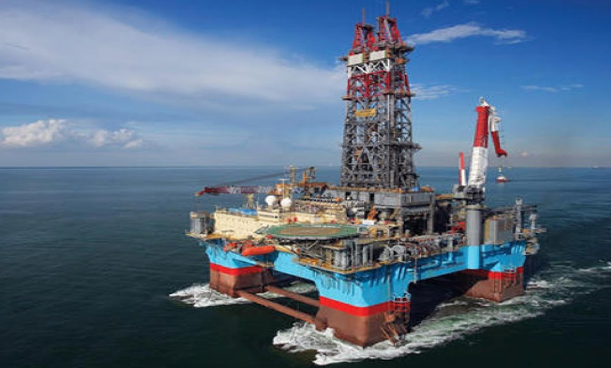Table of Contents
ToggleThe Worldwide Oil and Gas Sector
The Worldwide Oil and Gas Sector : An Extensive Synopsis 2024. The global oil and gas sector continues to play a critical role in the world’s economy, energy security, and geopolitical landscape. As of 2024, the industry faces a dynamic environment shaped by technological advancements, fluctuating market conditions, environmental concerns, and evolving regulatory frameworks. This comprehensive synopsis delves into the current state of the oil and gas sector, key trends, challenges, and future outlooks.
About The Worldwide Oil and Gas Sector
Sponsorship Visa : Yes
Position : Multiple
Number Of Vacancies : Multiple
Salary : $30 per hour
Education : Bachelor Degree/Diploma/High School
Location : Worldwide
Global Market Overview
The oil and gas industry comprises three main segments: upstream, midstream, and downstream. Each segment has distinct functions and faces unique challenges and opportunities.
Upstream Sector
The upstream sector involves the exploration and production of crude oil and natural gas. In 2024, technological advancements in seismic imaging, drilling techniques, and reservoir management have significantly enhanced the efficiency and success rate of exploration activities. Key regions for upstream activities include:
- Middle East: Dominated by countries like Saudi Arabia, Iran, and Iraq, the region remains a cornerstone of global oil production.
- North America: The United States and Canada continue to be major players, with significant production from shale formations.
- Russia: As one of the world’s largest producers, Russia plays a crucial role in both global oil and natural gas markets.
Midstream Sector
The midstream sector focuses on the transportation, storage, and wholesale marketing of crude or refined petroleum products. Pipelines, shipping, and rail are essential components of this sector. Key developments include:
- Infrastructure Expansion: Significant investments in pipeline infrastructure, particularly in North America and Russia, are aimed at improving the efficiency of oil and gas transportation.
- LNG Market Growth: The liquefied natural gas (LNG) market is expanding, driven by increasing demand in Asia and Europe. This growth necessitates advancements in LNG shipping and storage facilities.
Downstream Sector
The downstream sector encompasses refining, distribution, and retail of petroleum products. In 2024, this sector is characterized by:
- Refining Capacity: Countries like China and India are expanding their refining capacities to meet domestic demand and become major players in the refined products market.
- Petrochemicals: The petrochemical industry is growing, driven by demand for plastics and other chemicals. This has led to significant investments in new petrochemical plants, particularly in Asia.
How To Apply For The Worldwide Oil and Gas Sector

APPLY NOW
Key Trends Shaping the Industry
Energy Transition and Sustainability
The push towards cleaner energy sources is reshaping the oil and gas sector. Companies are increasingly investing in renewable energy projects, carbon capture and storage (CCS) technologies, and energy efficiency measures. Key initiatives include:
- Net-Zero Targets: Many oil and gas companies have set ambitious net-zero emissions targets, investing in renewable energy sources like wind, solar, and hydrogen.
- Carbon Pricing: The implementation of carbon pricing mechanisms in various regions is influencing investment decisions and operational strategies.
Technological Innovations
Technological advancements are driving efficiency and reducing costs across the oil and gas value chain. Important innovations include:
- Digitalization: The adoption of digital technologies such as artificial intelligence (AI), the Internet of Things (IoT), and big data analytics is enhancing operational efficiency and decision-making processes.
- Advanced Drilling Techniques: Techniques like horizontal drilling and hydraulic fracturing have unlocked new reserves, particularly in shale formations.
Geopolitical Dynamics
Geopolitical factors continue to significantly impact the oil and gas sector. Key considerations include:
- OPEC+ Policies: The policies and production decisions of the Organization of the Petroleum Exporting Countries (OPEC) and its allies (OPEC+) play a crucial role in balancing global oil markets.
- US-China Relations: Trade relations between the United States and China affect global oil demand and supply chains, influencing market stability and pricing.
Challenges Facing the Sector
Environmental Concerns
The oil and gas industry is under increasing pressure to address environmental issues. Key challenges include:
- Climate Change: Reducing greenhouse gas emissions and transitioning to low-carbon energy sources are paramount challenges for the industry.
- Regulatory Compliance: Stricter environmental regulations and policies are being implemented globally, requiring companies to adapt their operations.
Market Volatility
Fluctuating oil prices and market uncertainties present significant challenges. Factors contributing to market volatility include:
- Supply and Demand Imbalances: Variations in global economic growth, production levels, and geopolitical tensions can lead to imbalances that impact prices.
- Investment Cycles: The cyclical nature of investments in the oil and gas sector, driven by price fluctuations, affects project planning and execution.
Technological Adaptation
While technology offers significant benefits, the rapid pace of technological change presents challenges:
- Integration and Implementation: Integrating new technologies into existing operations requires substantial investment and change management efforts.
- Cybersecurity: The increasing reliance on digital technologies makes the industry vulnerable to cyber threats, necessitating robust cybersecurity measures.
Future Outlook
Energy Diversification
The future of the oil and gas sector lies in diversification. Companies are expected to continue investing in renewable energy projects, energy storage solutions, and sustainable practices. This transition will be gradual, with hydrocarbons remaining a significant part of the energy mix in the near term.
Innovation and Collaboration
Collaboration across the industry and with external stakeholders will be crucial for addressing challenges and seizing opportunities. Joint ventures, partnerships, and cross-sector collaborations will drive innovation and enhance sustainability efforts.
Resilience and Adaptation
The oil and gas sector must build resilience to withstand market fluctuations and regulatory changes. This involves strategic planning, risk management, and a proactive approach to environmental and social governance (ESG) issues.
Conclusion
The worldwide oil and gas sector in 2024 is at a pivotal juncture, balancing the demands of traditional energy production with the imperative of sustainable development. Technological advancements, environmental concerns, and geopolitical dynamics are reshaping the industry. By embracing innovation, diversification, and collaboration, the sector can navigate the challenges and capitalize on the opportunities ahead, ensuring its continued relevance and contribution to global energy security.



